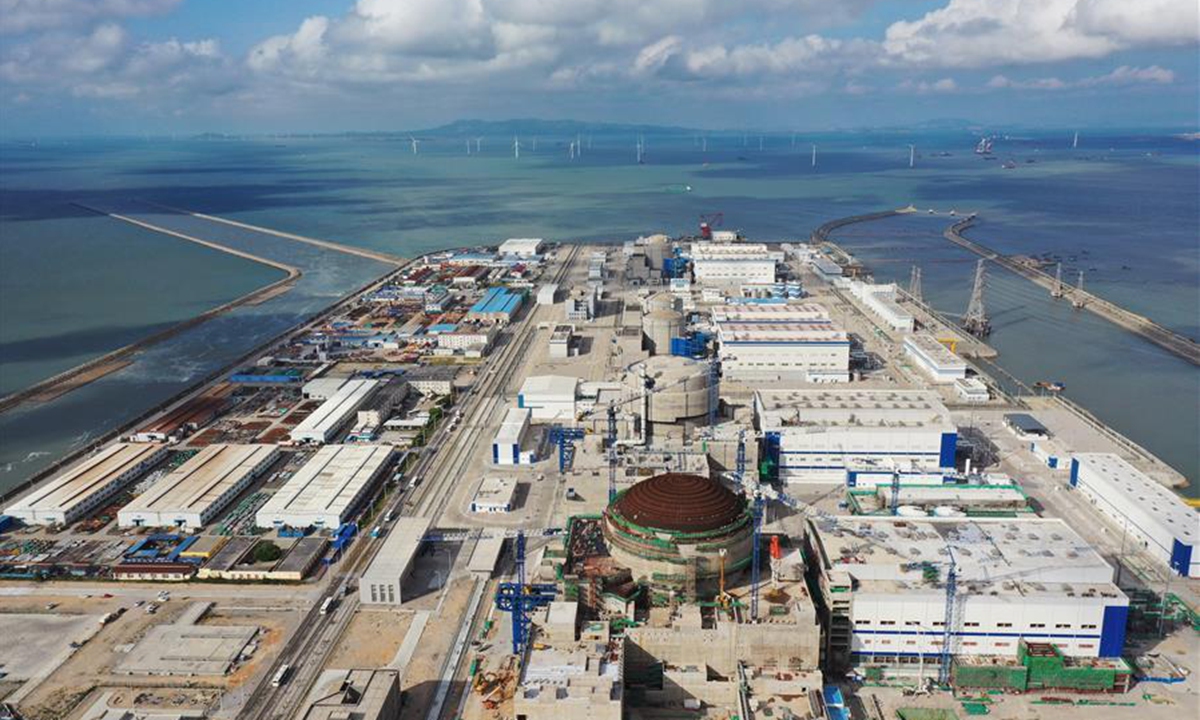COMMENTS / EXPERT ASSESSMENT
Fukushima lessons may have relevance for China’s clean energy path

Aerial photo taken on Aug. 31, 2020 shows a panoramic view of Fuqing project in the city of Fuqing, southeast China's Fujian Province. Fuel loading started Friday at China's first nuclear power unit using Hualong One technology, a domestically developed third-generation reactor design, bringing the unit one step closer to operation. Photo: XinHUA/Guo Donghai
It has been a decade since the Fukushima nuclear incident, the world’s second-worst nuclear disaster after Chernobyl. The still disturbing consequences of the disaster have not only changed Japan’s energy strategy but also dealt a severe blow to the development of global nuclear power.
Today, the Fukushima incident may still have some relevance for us in terms of correctly understanding the role of nuclear power in China’s clean energy pursuit.
In fact, just before the Fukushima incident, renewed hope for the next wave of nuclear energy technologies had just fueled optimism about the role nuclear power could play in a low-carbon future. But after the Fukushima disaster showed the world the catastrophic results of the real risk of a nuclear energy facility, protests against construction of nuclear power plants broke out in many parts of the world, and some countries like Germany even announced plans to shut all nuclear reactors and replace nuclear power with other clean energy options.
In the aftermath of the Fukushima disaster, the construction of new nuclear power plants in China was also affected. Over the years, most nuclear power projects that were either under construction or completed are those that had received approvals before 2011.
Yet, considering China’s goal of achieving a carbon peak by 2030 and carbon neutrality by 2060, the proportion of nuclear power in China’s power generation is relatively low currently. Statistics show that China’s total power generation reached 7.42 trillion kilowatt-hours in 2020, with nuclear power accounting for 4.94 percent of the total.
For a long time, construction of nuclear power plants has indeed been a source of public concern, but it should be pointed out that the safety standards of nuclear power units are high, and as technology evolves, safety levels have been further strengthened.
Judging from the current state of technological development, China’s nuclear energy construction is likely to usher in a growth period. In January, China’s first nuclear power unit using Hualong One technology, a domestically developed third-generation reactor design, started commercial operation in Fuqing, East China’s Fujian Province. Drawing the lessons of the Fukushima nuclear disaster, Hualong One reactor is said to meet highest safety standards, according to media reports.
On the premise of ensuring safety, it is acknowledged that nuclear power still has certain irreplaceable advantages compared with wind and solar energy. Solar and wind power are now seeing increasing power generation capacity, but they are still far from replacing fossil fuel to become as a reliable power supply. The Texas blackouts serve as the most vivid example as to what would happen when renewable energy becomes unreliable. In this sense, while dedicating efforts in developing wind, solar and other clean energy toward green transformation, a country still needs nuclear power as a stable supplementary source of electricity.
This is perhaps why China’s 2021 government work report promotes the clean and efficient use of coal, the development of renewable energy sources, and the active and well managed development of nuclear power while ensuring safety. It is the first time that the government work report mentioned the word “active” when referring to the nuclear energy.
Of course, even though China’s clean energy development cannot avoid use of nuclear energy, it should be noted that due to location and safety considerations, the number of China’s nuclear power plants will not see unlimited growth.
Globally speaking, as the climate crisis looms, nuclear power will be an inescapable option if countries intend to tackle with global warming.
The article was compiled based on an interview with Lin Boqiang, director of the China Center for Energy Economics Research at Xiamen University. bizopinion@globaltimes.cn
